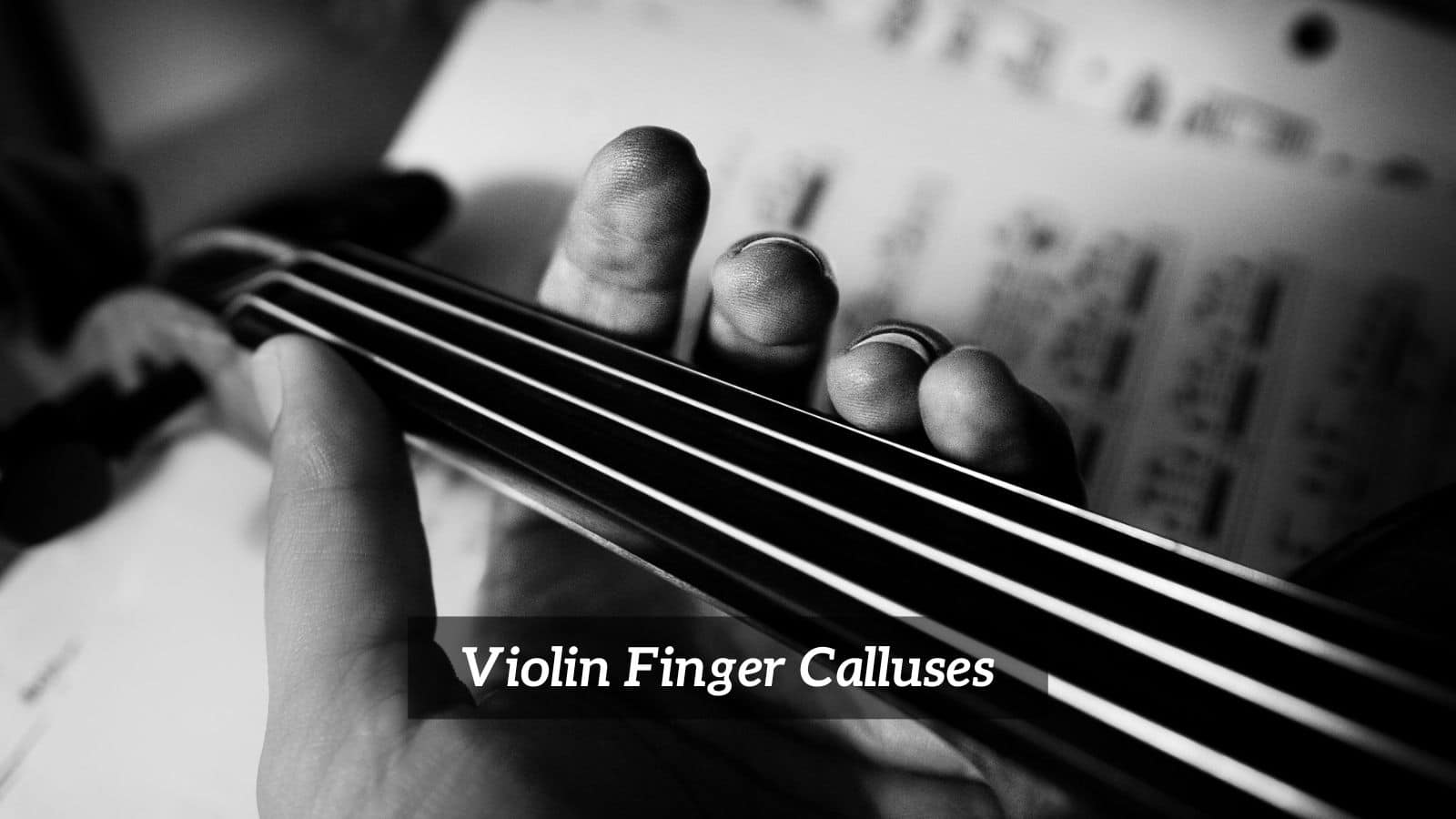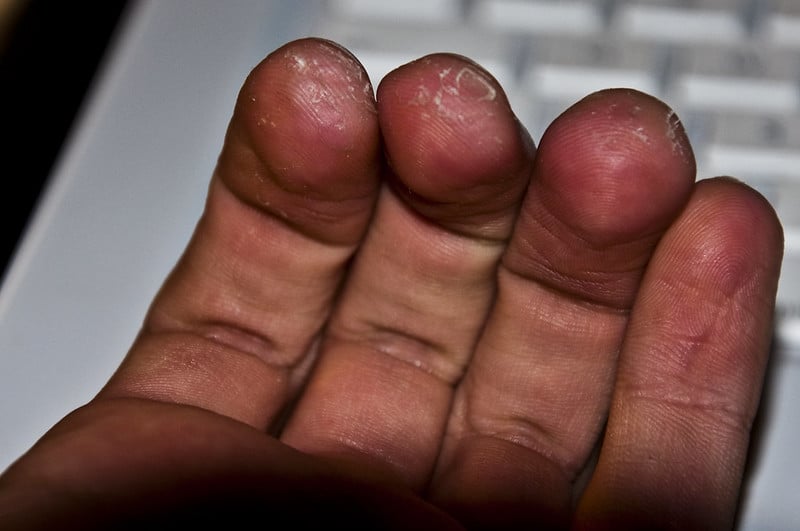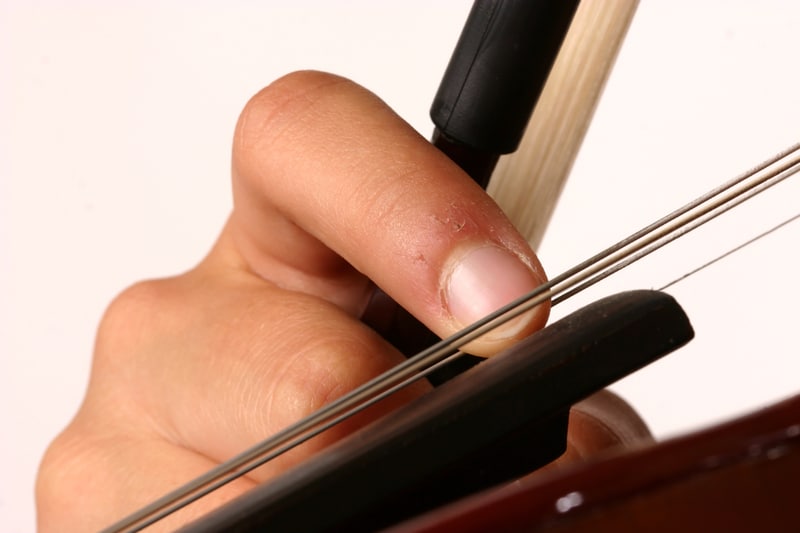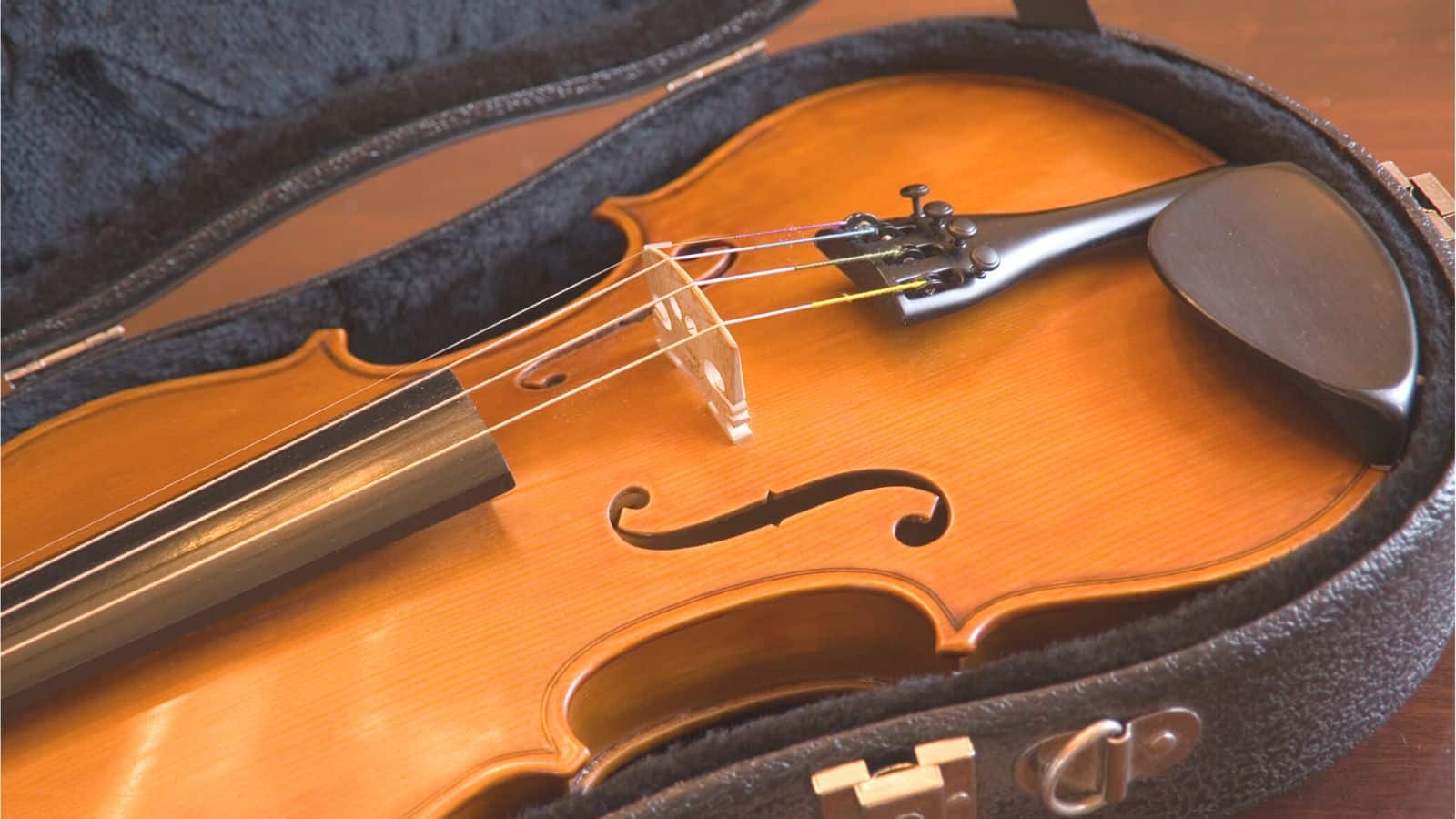It is quite a common thought that players of all instruments must develop calluses or marks in their bodies as a sign of correct or diligent practice. What’s more, the idea that every musician will eventually suffer from any kind of hand injury is still pretty common, even among musicians.
In modern times these old-fashioned thoughts are proven to not be correct, and to help students get rid of calluses, we will discuss briefly how they are acquired and how to avoid or get rid of them.
Violin Finger Calluses
What is a callus?
It is a hard and thick layer of skin that appear in some parts of the body that have suffered constant friction or pressure, especially fingers and toes, and can be painful or not. Many people develop calluses at school after writing too much with pens or pencils.
Musicians, in turn, can develop calluses simply by playing their instruments. In the case of violinists, calluses often appear in the tip of the fingers of the left hand or potentially in the left thumb or index finger of the right hand. They are totally avoidable with simple changes.
No pain no gain?
Every violinist, from the first lessons – or even before that – are told that the only way to sucess is practicing many hours a day. But not everyone is told that resting body and mind are equally important, and that the excess of practice is harmful.
Because of that, some of the most avid students create unrealistic study routines that end up bringing negative results. If the teachers do not help these students set some good practice strategies, optimal results will be definitely doomed from the start.
Another reason for unhealthy practice sessions is the lack of relaxation, both physically and mentally – which are strongly connected to each other. When putting too much strain on a group of muscles while playing the violin, one of the most common consequences is the appearance of calluses.
They can indeed reflect an unhealthy practice routine, although some of the good players may have developed calluses along the way for a number of reasons. The fact is that calluses can be totally avoided from the beginning.
Avoiding calluses
The first step to avoiding calluses is to keep hands relaxed when playing the violin.
The most common areas of the body that can develop calluses are the tips of the fingers, and the lateral parts of the index finger of the right hand – which presses the bow – and possibly the region near the fingerprint of the left thumb – which presses against the neck of the violin.
Similar marks can be found in the neck and chest, from where the violin gets support, if the neck and head are not relaxed enough. The latter can have different origins like allergies, etc. In order to avoid these marks, the following steps are strongly advised:
1- Height of strings
One of the results for the appearance of calluses in the tips of the left hand fingers are the big gap between string and fingerboard due to a high nut (piece of ebony on which the strings sit nesr the scroll).
When this distance is big, the finger needs to exert more force against the string to make it reach the fingerboard. If the player is unware of that, he/she will keep playing and thinking that that amount of effort is normal, when in fact it is detrimental to their technical development.
2 – Short bridge
A similar problem happens when the bridge is too tall. Strings will be raised way above the fingerboard, especially towards the bridge, and playing in higher positions becomes almost impossible.
If the player constantly plays in a poorly adjusted instrument, he can easily develop calluses and other hand related injuries.
3 – Avoiding pizzicati
Right and left-hand pizzicatos can quickly cause calluses in the fingers. This happens because the tension of the violin strings are much high, which means that the string feels hard to the touch and plucking it in order to produce a loud sound requires some considerable effort.
Instead of practicing pizzicato sections only with the tip of the fingers, ideally the player should also learn these passages using the bow. This piece of advice is valid for both type of pizzicati: left and right hand.
4 – Exercises for relaxation
The most common problem among beginners and even intermediate students is excess of tension. So, even if the instrument has been properly set up, playing with unnecessary tension can lead to the aforementioned injuries.
Players should constantly seek relaxation through proper exercises. One of the most effective exercises is contracting the muscles of the body and immediately releasing the tension, so as to understand the difference between tense and relaxed muscles.
The next exercise requires just a regular set of small breaks, that could happen at every ten or fifteen seconds, just to check if the hands, fingers and body are completely relaxed.
5 – Long breaks
Long breaks are also necessary for the quick recovery of the body in all aspects. Muscles need break, mind as well. If any pain persists, interrupting the studies for some days is advisable.
Calluses and other injuries can be prevented if the player is being careful and concerned about his/her limits. Understanding the real causes of injuries is very important and necessary to avoid further complications.
6 – Treatment
In case the student is already suffering with painful calluses, a small period without playing the instrument is a simple and quick solution. Avoiding further tension can solve the problem.
Conclusion
Calluses can be totally avoided without hindering technical progress. Reaching an advanced or professional level does not require calluses in the hands neither the excessive amount of daily practice but a healthy life style combined with good practice strategies.
The old-fashioned “no pain, no gain” philosophy should not be followed by violinists who seek success without injuries. It is always advisable that the player seeks instruction from a good teacher who is also aware of the dangers of bad or painful practice habits.




